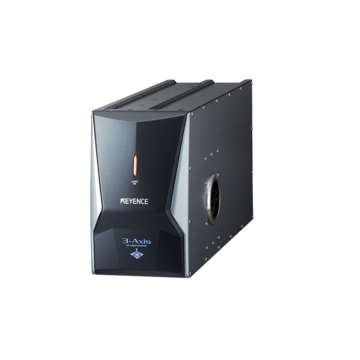Laser Marking Systems / Laser Markers
UV Laser Marking
UV laser markers use ultra-violet light, typically at a 355 nm wavelength, to mark or process materials. This wavelength, about a third of the typical fibre, allows the UV laser to do things that no other laser marker can. The shorter wavelength delivers significantly higher absoption and a much smaller beam spot. This allows for high contrast and damage free marking on metals and plastics, and the ability to mark smaller or more precise parts. This makes it an ideal solution for heat sensitive materials or parts requiring precision that typical fibre lasers cannot achieve.
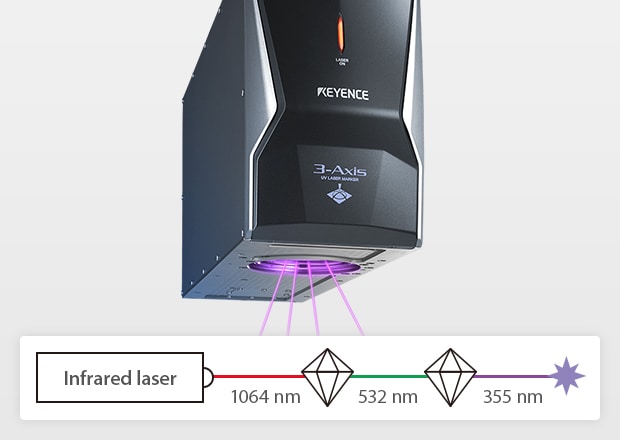
What is a UV Laser?
To produce a UV laser, the laser beam passes through two additional crystals that conventional fibre laser systems lack. First, By passing a standard wavelength laser (1064 nm) through a nonlinear crystal, the wavelength is reduced to 532 nm. Then, this light is further passed through another crystal, effectively reducing its wavelength to 355 nm. As a result, UV lasers are commonly called third-harmonic generation (THG) lasers because they are the third wavelength created. Marking using these lasers is called "Cold Marking", which refers to how they can perform marking and processing with minimal heat stress.
Get detailed information on our products by downloading our catalogue.
View Catalogue

UV Laser Marking Applications
UV lasers feature a highly absorptive wavelength of 355 nm. This is dramatically shorter than general laser marking and processing systems which allows many materials to absorb it at a much higher rate. The shorter wavelength also allows a UV laser to perform "cold marking." This is characterised by photolytic processing of the materials bonds to create contrast or remove material.
General lasers use a thermal process of vibrating the bonds of material, via heating, to the point that they break.
This often leads to a heat affected zone (HAZ), which is a zone surrounding the mark where material properties are changed due to heat exposure. This can damage products or create more scrap.
UV lasers remove the risk of this heat affected zone as marks stay more surface level, while still creating permanency. A UV laser is ideal for almost any plastic, resin, glass, rubber, or ceramic needs, as well as any metal marking or processing application where the effects of laser marking on the materials surface finish may be a concern.
UV Laser Feature: High-Contrast Marking
Compared with standard laser light (1064 nm) and green laser light (532 nm), UV laser light has a remarkably higher material absorption rate. This means more highly visible marks can be achieved with less power, ensuring a damage-free mark. The high absorption rate also means a UV laser marking machine tackles difficult materials such as plastics, highly reflective metals, and heat sensitive materials. For example, UV laser marking machines are used for product identification, medical device manufacturing, and aerospace components where heat damage from conventional lasers is not permitted. It is also used on different plastics and coloured plastics that are difficult or impossible to mark with the fibre wavelength.

Highly Robust Against Material Inconsistencies
UV lasers eliminate the need for tricky readjustment of laser marking parameters to counteract contrast decreases due to material changes, inconsistent surface conditions of moulded parts, and different resin lots. With high contrast, this robustness provides the characteristics, including resistance against ambient light, that enable marking operation with fewer failures.
Absorption Rate for Plastics

Absorption rates for various resin materials
* The values are for reference only and do not account for surface reflectivity
Absorption Rate for Metals

Light absorption rate for metal
UV Laser High- Contrast Marking Application
The FDA requires all but Class I medical devices to contain traceability codes that machines and people can read. The "cold marking" process allows medical manufactures to mark anything, from PE medication bottles to implantable devices, with the confidence those marks will withstand stringent sterilisations cycles.
We’re here to provide you with more details.
Reach out today!

UV Laser Marking Feature: Damage-Free Marking & Processing
Why is a UV laser marking machine the superior choice in these types of applications? The main reason it was developed is that the absorption rate is incredibly high for a variety of materials. This allows marking and processing to be performed with minimal heat stress. It also reduces surface damage, allowing for corrosion-resistant marking. These attributes protect the materials or components from issues during the marking and manufacturing process. This is true even for highly reflective materials like gold, silver, and copper and sensitive materials like glass, rubber, ceramic, and plastic.
Perform Both Marking and Processing Without Thermal Damage
Standard Wavelength
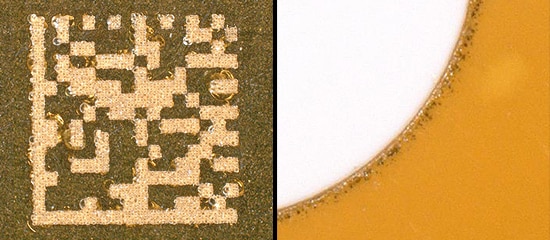
Marking / Cutting
MD-U
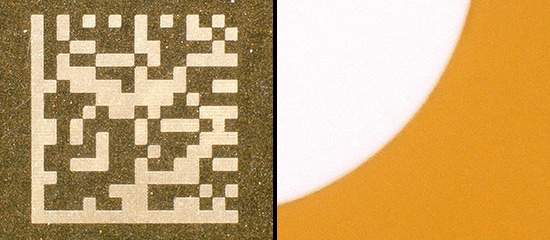
Marking / Cutting
Thermal Processing
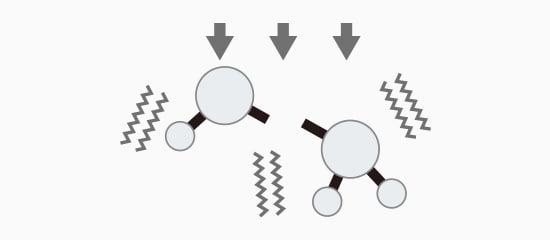
Bonds are destroyed using heat to vibrate the molecules.
Photolytic Degradation Processing

Bonds are broken with light, resulting in less heat.
Conventional

UV Laser
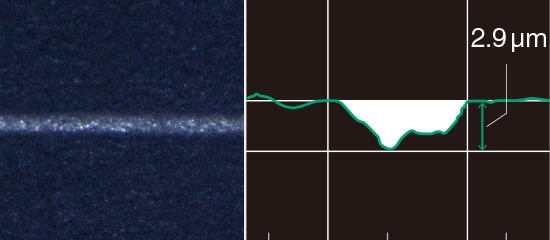
Marking with reduced amount of engraving.
UV Laser Damage-Free Marking Application: Electronic Parts
Electronic parts are becoming smaller, and their sealing resins are becoming thinner. Typical laser markers risk transmitting energy through sealing resins and damaging the internal components. However, UV laser markers have an incredibly high material absorption rate and can mark sealing resins without reaching down to the internal components and risking damage. Since a UV laser marking machine can mark sealing resins, manufacturers can add more identification or traceability marks to electronic part surfaces. Customers and manufacturers get quicker recalls and more up-to-date product information.
UV Laser Damage-Free Marking Application: Quartz Glass
Quartz glass is used for windows or screens and is notable for being difficult to mark. It's sensitive to cracks yet heat resistant, requiring a gentle marking method. The UV laser uses its high absorption and power-dense beam spot to mark slowly and produce clean, visible marks. The UV laser marker beam is strong enough to conquer the heat resistance yet delicate enough not to crack the quartz glass.
Discover more about this product.
Click here to book your demo.

Product Introduction
3-Axis UV Laser Marker MD-U Series
The 3-Axis UV laser markers use a UV wavelength of 355 nm to mark or process parts with cold-marking technology. These markers have three different axes to control the laser beam, designed for uniform marking over large fields of view or 3D shape parts. UV laser marker systems incorporate groundbreaking technology that is revolutionising the way we mark and engrave objects. Additionally, a 3-Axis laser marker allows complete control of the focal distance to keep the laser in focus through different height parts or difficult geometries.
Uniform Marking
The 3-axis control adjusts the focal point throughout the UV laser marking process to maintain distortion-free marking over the entire field of view by constantly adjusting the point at which the laser comes into focus. Because of the adjusting focal point, the beam will remain in focus thoughout a much larger field of view (330 mm x330 mm), where conventional laser markers can't.
3D Shape Marking
The 3-axis control also addresses one of the most common concerns within laser marking and processing: 3 dimensional shapes. Where conventional systems are constrained to working in a single plane, KEYENCE systems are able to variable adjust their focal points to stay in focus on multiple-step heights, cylinders, inclines, cones, spheres, or even map to a CAD image of on-standard shaped products.
Multi-function built-in camera
A built-in camera in the MD-U UV laser marker enables autofocus, 2D code reading, marking confirmation, and a built-in finder view to map your marking program on a live image of the product under the laser.
Conventional

3-Axis

Steps

Inclined Surface

Cylinder

Circular Cone

We’re here to provide you with more details.
Reach out today!

Small Beam Spot and High Beam Quality
The spot diameter of a laser is greatly impacted by the wavelength, since UV lasers are 1/3 the standard Fibre wavelength the spot size is narrowed accordingly. This opens the possiblity of marking where there is extremely limited space, and where marking was not an option before. There is also a continually rising demand for manufactures to reduce the component size and increase functionality, so the ability of the UV laser to mark, not only the finished product, but the individual components is very unique.
Issue
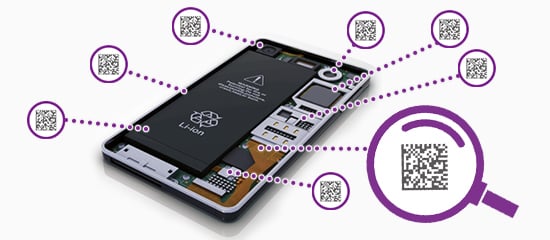
An increase in the number of markings required due traceability improvement.
Solution

Laser marker spot diameter
Clear marking when space is limited.
Curious about our pricing?
Click here to find out more.

IP64 Rating
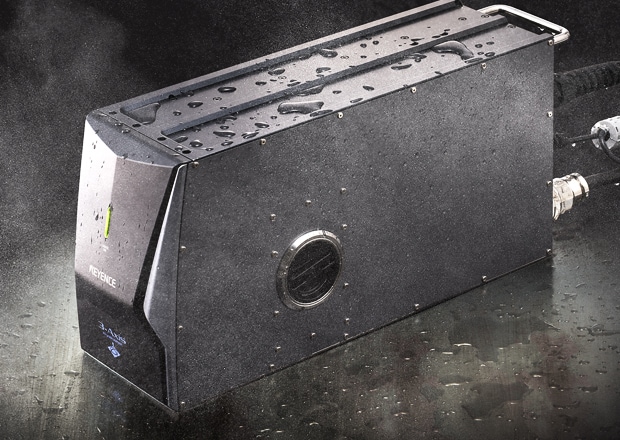
The MD-U Series uses a proprietary sealing method to securely protect optical components. This ensures that these components are not affected by factors such as dirt, dust, and water. This also provides environmentally resistant performance, which allows for stable operation in even the harshest environments. The MD-U Series has an enclosure rating equivalent to that of the fanless marking head of the MD-F. This is not the case for other UV laser marking systems.
We’re here to provide you with more details.
Reach out today!

Incorporate KEYENCE's MD-U UV Laser in Your Next Project
Do you manufacture glass, plastic, ceramic, copper, silver, or gold? Consider adding KEYENCE's MD-U UV laser marking machine to your next project. We offer free trial equipment, demos, and after-sales support. Contact us today to discuss your needs and questions.
Get detailed information on our products by downloading our catalogue.
View Catalogue


![UV Laser Marker Application Guide [High Contrast Marking]](/img/asset/AS_95185_L.jpg)
![UV Laser Marker Application Guide [Fine/Damage-less]](/img/asset/AS_96216_L.jpg)

